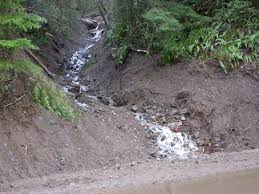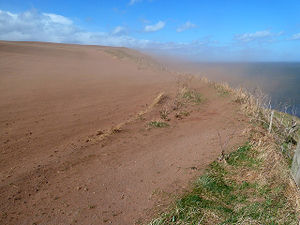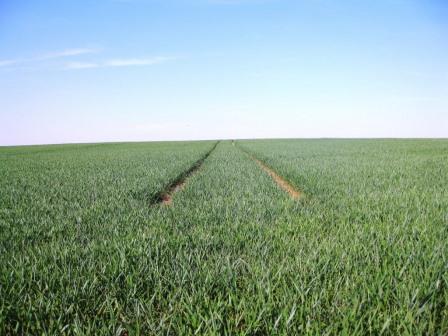Soil erosion: Difference between revisions
No edit summary |
m The LinkTitles extension automatically added links to existing pages (<a rel="nofollow" class="external free" href="https://github.com/bovender/LinkTitles">https://github.com/bovender/LinkTitles</a>). |
||
| Line 2: | Line 2: | ||
== Definition == | == Definition == | ||
Soil Erosion is defined as the gradual wearing away of topsoil over time. Soil erosion is caused by many factors including rain, snow, wind, plants, animals, and human activity. | [[Soil]] Erosion is defined as the gradual wearing away of topsoil over time. Soil erosion is caused by many factors including rain, snow, wind, plants, animals, and human activity. | ||
== Types of Soil Erosion == | == Types of Soil Erosion == | ||
Revision as of 12:05, 29 April 2021
Definition
Soil Erosion is defined as the gradual wearing away of topsoil over time. Soil erosion is caused by many factors including rain, snow, wind, plants, animals, and human activity.
Types of Soil Erosion
Water Erosion

Water erosion occurs when water, either from rain or running water on the surface, causes the topsoil to wear away. The best way to restore soil that has been eroded by water or is being eroded by water is to introduce vegetation to the soil. The roots will help keep the soil in place as well as absorb some water to decrease the effects of water erosion. Water erosion is most prominent in areas where there is a lot of rain and in areas with many streams/springs. There are many kinds of water erosion that range from the splash of raindrops disturbing the surface of the soil to rivers and streams washing out banks in the soil.
Splash Erosion - Soil particles are disturbed and moved by rain droplets impacting the ground.
Sheet Erosion - Heavy rainfall causes water to move downhill as a sheet rather than in a channel wearing away the topsoil across a wide area.
Rill Erosion - Small rills are formed were rain or spring water gathers and erodes a small channel in the ground.
Gully Erosion - Larger versions of Rills that can erode deep into the soil.
Valley/Stream Erosion - Constant water movement causes V shaped channels in the soil that can become actual streams given enough time and rainfall.
Bank Erosion - High banks on the sides of rivers and streams are worn away by the constant flow of water until the bank collapses into the river.
Wind Erosion

Wind erosion occurs when gusts of wind spread topsoil varying distances based on how fine the soil is. Very fine soils are spread far while larger grained soils are carried shorter distances. Wind erosion is most prominent where there are no windbreaks such as trees, shrubs, or buildings to cut off the wind. Grass can also aid in reducing wind erosion by acting as a cover for the soil. Wind erosion usually occurs where there is little cover to break the wind and where soil is the driest. There are 3 names for the different ways soil is transported by wind.
Suspension - Small soil particles are lifted extremely high into the air and can be brought miles away from where they started.
Saltation - Loose soil is lifted then they drift horizontally to the ground gaining momentum with the wind. Saltation is the most common form of wind erosion and can cause a lot of damage to the surface of the soil.
Creep - Larger particles that are too heavy to be lifted are pushed across the ground and are often pushed further by the particles being thrown by Saltation.
Biotic Erosion
Biotic erosion occurs when plants or Animals contribute towards soil erosion. Of all the living things on earth humans contribute the most to soil erosion. Overgrazing by cattle and other farm animals can cause serious damage to the soil by removing grass that would normally protects the soil from both water and wind erosion. The over farming of land can also cause soil erosion, if crops are not properly rotated the soil can lose its nutrients and begin to erode.
Restoration of Eroded Soil and the Prevention of Soil Erosion
There are many ways in which eroded soil is restored. The planting of trees or shrubs to give soil relief from the wind is a common way of reducing the effects of soil erosion. Along with trees and shrubs stone fences are often built for the purpose of reducing the effect of wind erosion on soil. On farmland the adoption of crop rotation has helped reduce the effect of soil erosion by planting different plants in different seasons to put less strain on the soil. The use of monoculture has been shown to increase the effects of soil erosion and cause farmland to erode faster than if multiple crops were produced on the same land. Humans mismanaging soil and water is a major reason why soil erosion is as big a threat as it is. Deforestation along with over farming and monoculture are major accelerators of soil erosion and can leave the soil severely damaged for a long time. Many soil restoration techniques involve the planting of trees and shrubs to help safeguard the soil from both rain and wind.
References
1. Causes of Water Erosion. (n.d.). . https://www.erosionpollution.com/water-erosion.html.
2. Heritage Te Manatu Taonga. 2012, July 13. 7. – Soil erosion and conservation – Te Ara Encyclopedia of New Zealand. Ministry for Culture and Heritage Te Manatu Taonga. https://teara.govt.nz/en/soil-erosion-and-conservation/page-7.
3. How human activities can accelerate soil erosion. (n.d.). . http://lcgeography.preswex.ie/how-human-activities-can-accelerate-soil-erosion.html.
4. Soil Erosion Causes and Effects. (n.d.). . http://www.omafra.gov.on.ca/english/engineer/facts/12-053.htm.
5. Wind Erosion. (n.d.). . http://milford.nserl.purdue.edu/weppdocs/overview/wndersn.html.
